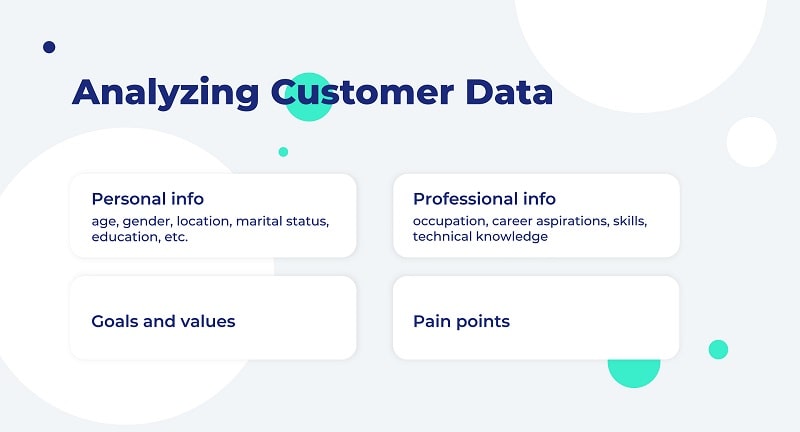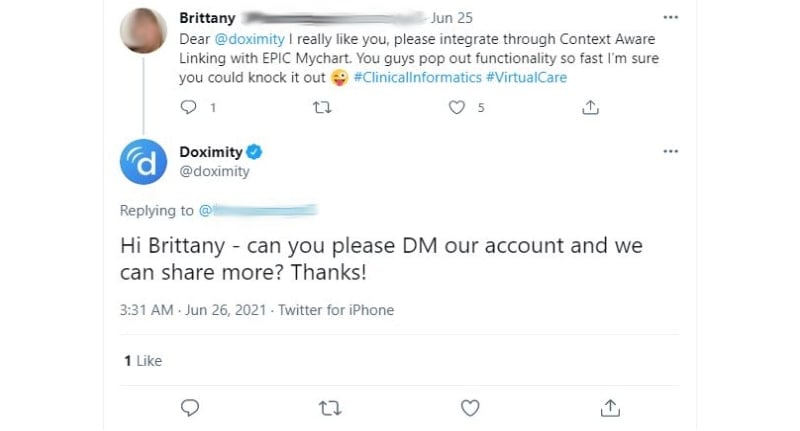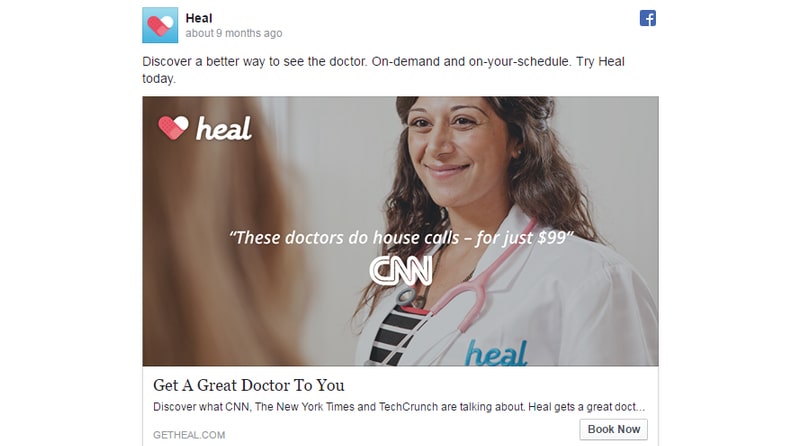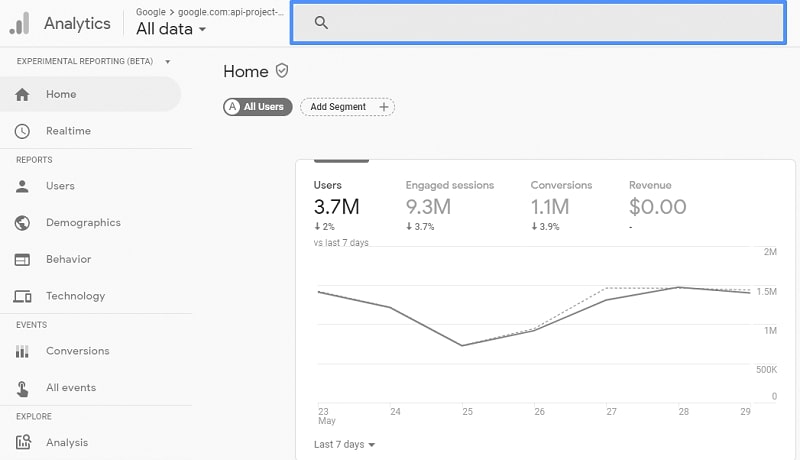
Social Media Marketing

Healthcare marketing is the practice of promoting healthcare services through certain strategies to attract more patients to your business.
The COVID-19 global pandemic has put the entire healthcare system to a major test, rapidly transforming the healthcare industry and, consequently, healthcare marketing.
Significant changes and trends have been emerging, and now it’s more vital than ever to stay up to date with the new developments in the sphere. For this reason, we have gathered 16 modern healthcare marketing strategies that will ensure a competitive advantage for your business in today’s dynamic digital marketing world.
Ready to revamp your healthcare marketing strategy? Let’s get started!
Content marketing has proven to be one of the most effective ways of increasing brand visibility and attracting new customers. Patients nowadays are more proactive when it comes to their health and want to educate themselves on important medical matters before contacting healthcare providers.
Most people go online to look for information when they’re faced with a healthcare problem. You can direct them to your website by covering the issues patients are interested in and offering them expert knowledge. Regardless of the healthcare sector, your business belongs to, you can identify topics relevant to your niche and build an effective content strategy.
One of the biggest advantages of content marketing is that it connects you to an audience that’s already interested in services similar to yours. If you manage to prove your value to your target audience by giving them high-quality, helpful content, they will start to trust your brand.
Why is video marketing so important? 85% of businesses use video for marketing, and 88% of them report a positive ROI. People are more eager to consume video content compared to other content types, and they’re more likely to follow a page if it has video content.
The biggest appeal of video is its entertaining and approachable nature. As a medical business, you might object that entertainment is not your aim, and we agree. But do keep in mind that people retain information much better when it’s presented to them via video. It’s much more effective to explain complex topics or introduce your business to an audience through video.
An ongoing trend among businesses in various industries has been the use of animated explainer videos. These types of videos serve to introduce a business and its services to prospective clients while keeping things light and engaging.
It’s certainly recommended to have an explainer for your healthcare brand, but the possibilities of video marketing don’t end there.
Explore your audience to find out what kind of video content they will be interested in, and use the insights to implement your healthcare video marketing plan. There are tons of attractive video templates available online that you can use to simplify the video creation process.
Most will argue that digital marketing begins with a website, and they won’t be far from the truth. A well-designed website that guides the user through their online journey is a prerequisite for any modern company.
When a client is looking for credible information about a healthcare center, they expect to find it on the company’s website. Make sure you provide them with that opportunity to establish trust from the very beginning.
Besides building a website, you also need to make sure you build it well. A functional website with well-planned navigation that gives visitors access to all the tools and resources they need will go a long way. Elements such as an online appointment-scheduling option, current information, important industry updates, and the like will position your brand as a reliable source.
Website design costs can run quite high depending on the size of your site, but if you’re looking for a quicker and more affordable option, ready-made website templates can be a great solution.
Your business’s online presence also extends to social media, as it’s a more convenient way to stay in touch with your audience on a regular basis. Social media platforms are an amazing medium to share short pieces of information, updates, news, and other content with your patients and, by doing so, keep the connection between you and your audience alive.
It’s important to keep your posts consistent with a social media calendar to keep your profiles up and running. The frequency of your posts is up to you and your schedule, but regardless of how often you post, make sure to stay consistent with it.
Visually appealing content performs best on social media, so be ready to get creative with your social posts. If you don’t have an eye for design and hiring a designer to create social graphics is not in your budget, you can make use of customizable social media graphics that require nothing more but simple edits.
An omnichannel platform will ensure you’re there for your customers when they need you because if you’re not, they might not think twice about reaching out to other healthcare providers. Regardless of where the user is on their buyer’s journey, having an interaction point with them every step of the way will serve to build trust with your business.
From the very first stage of awareness, when a potential client is looking for medical services online and comes across your website to the point where they want to establish direct contact with you through a call or social media message, your brand should be by their side, providing the needed assistance.
Website chatbots, social media messaging, email, and phone calls are the primary touchpoints with customers healthcare providers should establish in 2022. The more options clients have to get in touch with you and the more importance you give to first call resolution, the higher engagement you’ll see, so feel free to diversify your communication channels.
A strong brand differentiates you from competitors, painting a clear picture of who you are, what you stand for, and how you can help customers in a way no other business can. Identify what makes you different from other medical brands, such as your logo, values, services, tone of voice, customer care, and you will have built a strong, recognizable brand identity.
Once you determine your unique brand identity and value proposition, make sure to present it consistently across all platforms where you have a presence. Consistency plays a huge role in building a successful brand because it allows clients to remember you better by your unique attributes and assets.
Apart from making sure your patients know you, it’s also your responsibility to get to know your patients. And no, it’s not about remembering every single client by their personal information but rather finding common characteristics among your customer base to form a clear understanding of who your audience is.

If you don’t have an established customer base yet, define the target audience you want to attract to our brand or look at your competitors’ clients. Analyze the audience’s demographic data, characteristics, aspirations, goals, and problems they wish to solve. Once you know who you’re talking to, you can carve better communication with them, giving a significant boost to your healthcare marketing strategy.
94% of patients consider the reputation of the facility when they’re searching for a doctor or medical practice. Online platforms have made brand reputations more transparent and accessible than ever before, magnifying the impact reputation leaves on a business. Thus, online reputation management should be an integral part of digital marketing.
Pay close attention to any feedback you perceive — whether positive or negative. People tend to trust other people’s opinions regarding a product or business, so be sure to address any negative reviews you might get and try your best to clear away the confusion as quickly as your can. Leaving a bad review unattended will damage your brand’s image.

It’s a good practice to encourage customer feedback to make your audience feel heard and build your brand reputation simultaneously. Be sure to display positive patient reviews on your website, blog, social media profiles, or any business listings you might be registered on. Testimonials will add a level of credibility to your business, especially for the consumers who are just getting acquainted with your healthcare brand.
To put it in simple terms, local SEO is the process of optimizing your business data to gain more visibility on local search results. For instance, if a client is searching for medical institutions in your area, you want to make sure your name is the first one to come up. If your company has a physical facility, you can greatly benefit from having location-based SEO as part of your healthcare marketing strategy.
Some easy and effective ways to improve your local rankings are providing accurate data about your business, verifying your location, adding photos, managing online reviews, etc.
Another great tip to gain more traction through local searches is to list your business on global and niche business directories. Google My Business and medical-related listings like Doximity, Healthgrades, Vitals, RateMDs, and CareDash are amazing platforms to use.
Google’s mobile-first indexing has long been put into practice, but we still see a lot of companies dismiss the importance of a mobile-responsive website. The number of searches made on mobile has surpassed that of desktop searches. Consequently, Google is ranking websites based on mobile versions instead of desktop. This means that if your website’s functionality is less than perfect on mobile, your rankings are going to be affected.
How to ensure your website doesn’t suffer from this? Make your text clearly visible, your headlines well-organized, your CTA buttons easily clickable, and your menu adjusted for a small screen.
Whether you’re implementing PPC ad campaigns on major search engines or investing in social media advertising, smartly targeting your ads will guarantee you better results. If you treat patients in a physical office, geo-targeted ads will be your best option. While telemedicine or online healthcare providers can aim their ads at a specific demographic.

To increase your reach and draw more prospects to your business, you’ll need to develop a lead generation strategy. The hook that is going to successfully convert web visitors to leads is called a lead magnet. Your lead magnet can be a free guide, downloadable template, report, or any other useful content that users can access by providing their email address or contact details.
Once you acquire their contact information, you can start nurturing your relationships with potential customers using the healthcare marketing strategies you already have in your arsenal.
We live in a data-driven world where any piece of information you want — be it audience statistics, consumer behavior, page abandonment rate, etc. — can be easily accessible. Advanced analytics tools allow healthcare marketers to assess their efforts, see what works, and where they can improve.
Use data to your advantage to understand your audience better and base your decisions on measurable evidence rather than guesswork. Free tools like Google Analytics and Google Search Console can give you a lot of insight into your website traffic, help you track performance, and measure goals. You can find more e-commerce analytics tools in our article that can be just as useful for healthcare marketing.

As we live in a world governed by technology, patients tend to put more trust in healthcare facilities that are equipped with modern technologies and offer innovative solutions to clients. If you have the budget for it, invest in medical technology and software to improve your services and stay up to date with current standards.
Implement medical machine learning, telemedicine practices, online symptom checkers, online skin care analysis, virtual nurses, medical communication software, etc. In the midst of the coronavirus pandemic, more and more healthcare organizations are incorporating digital solutions to increase the convenience and safety of their patients. So make sure your business stays on top of the trend.
In today’s broad market, patients have more options than ever to choose a business that will best serve their needs. An enhanced patient experience can help your company stand out and gain a competitive advantage in the healthcare market.
Make your communication channels with customers as efficient as possible, provide a comfortable physical space when they visit you, receive feedback, and act upon it to prove that you value your clients’ opinions. If a patient has an enjoyable experience in your clinic, they’ll want to return to you next time they need a healthcare service.
Your medical center’s reputation is directly linked to that of your physicians: after all, they’re the heart and soul of your business. Helping your doctors build and maintain a respectable reputation and effectively showing it online will boost your brand’s overall image.
Some steps you can take toward staff reputation management are to register your doctors on online listings where they can get feedback from patients, provide special training, help to build strong social media profiles, and so on.
Now you have the most powerful tips to build your healthcare marketing strategy for 2022. As a business owner or healthcare marketing specialist, your goal is to ensure your healthcare facility is well prepared to withstand the changes enforced by the ongoing pandemic and digital marketing trends. Build a reputable brand, produce high-quality content across multiple channels, have a responsive website, and always use data to grow.
Article by
Dive into our Forestblog of exclusive interviews, handy tutorials and interesting articles published every week!
Read all posts by Renderforest Staff


Create Professional
with Renderforest All-In-One Design Platform.
Sign Up Now. It’s Free!